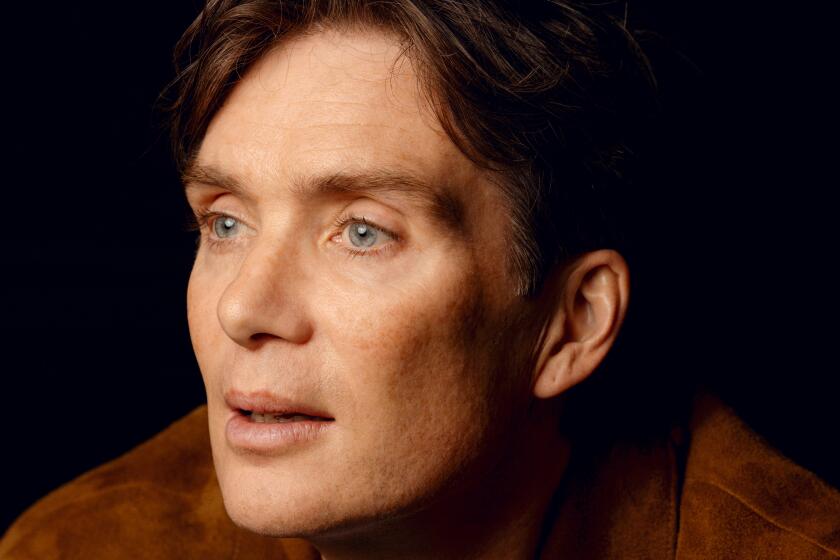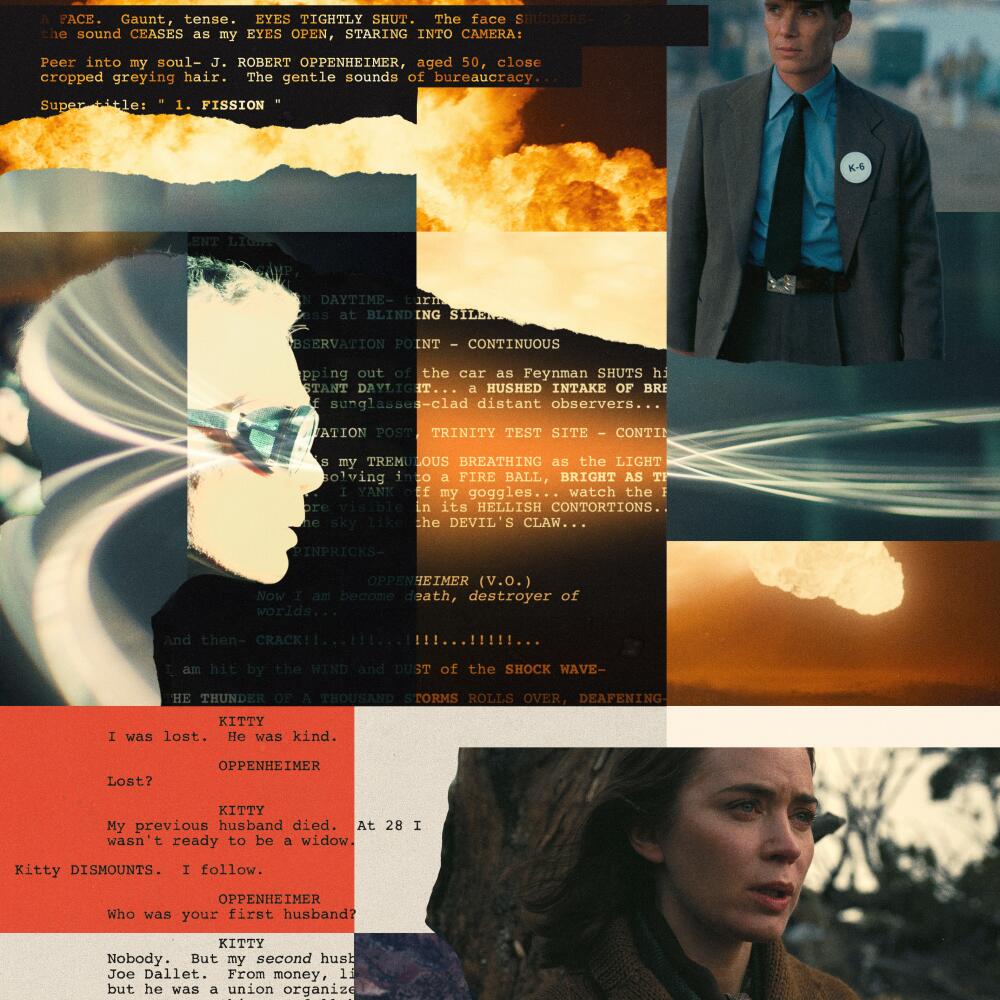
“I really was not very happy at the idea it was going to be a three-hour film,” producer Emma Thomas recalls of husband Christopher Nolan’s decision to make his latest movie, a drama about the life of J. Robert Oppenheimer, an epic. “I thought that was going to be suicide, honestly — a three-hour film in July.” But she changed her mind after she read Nolan’s screenplay for “Oppenheimer,” as gripping and fleet an act of storytelling as the resulting film. “Once you start reading the script, it grabs you by the neck and doesn’t put you down until the end — at which point you can’t imagine that you’ve just read a 180-page script.”
But even a brilliant script can be enhanced on set. The Times spoke to the film’s cast and crew, including Nolan, who shared their insights into how Nolan’s Oscar-nominated screenplay, based on Kai Bird and Martin J. Sherwin’s Pulitzer Prize-winning 2005 biography “American Prometheus,” transformed from the page to the screen.

Scene 1: Writing in first person
The vast majority of scripts are written in third person, but Nolan tried something radical, putting the stage direction in the Oppenheimer sequences in first person. “I had never seen it before, and I did not think of doing it when I started writing,” he says. But as he began the screenplay, the conventional approach wasn’t working. “I kept wanting to write voice-over [for Oppenheimer], and I knew that voice-over wasn’t the answer for this film.”
The solution came while he was quarantining with his writer-director brother Jonathan Nolan. “I rewrote in the first person as an experiment,” Nolan says. “I showed it to him without telling him why, and he got it immediately. He said to me, ‘You finally found a way to make people read the stage directions.’ ”
Nolan laughs. “[With] my projects, the stage directions are very important — they orient you in time and space — but the truth is, people reading a lot of scripts, they tend to just read the dialogue. First-person suddenly made all of that incredibly important and vital-seeming. Putting that in the stage directions allowed the reader to feel like they’re in Oppenheimer’s head.”
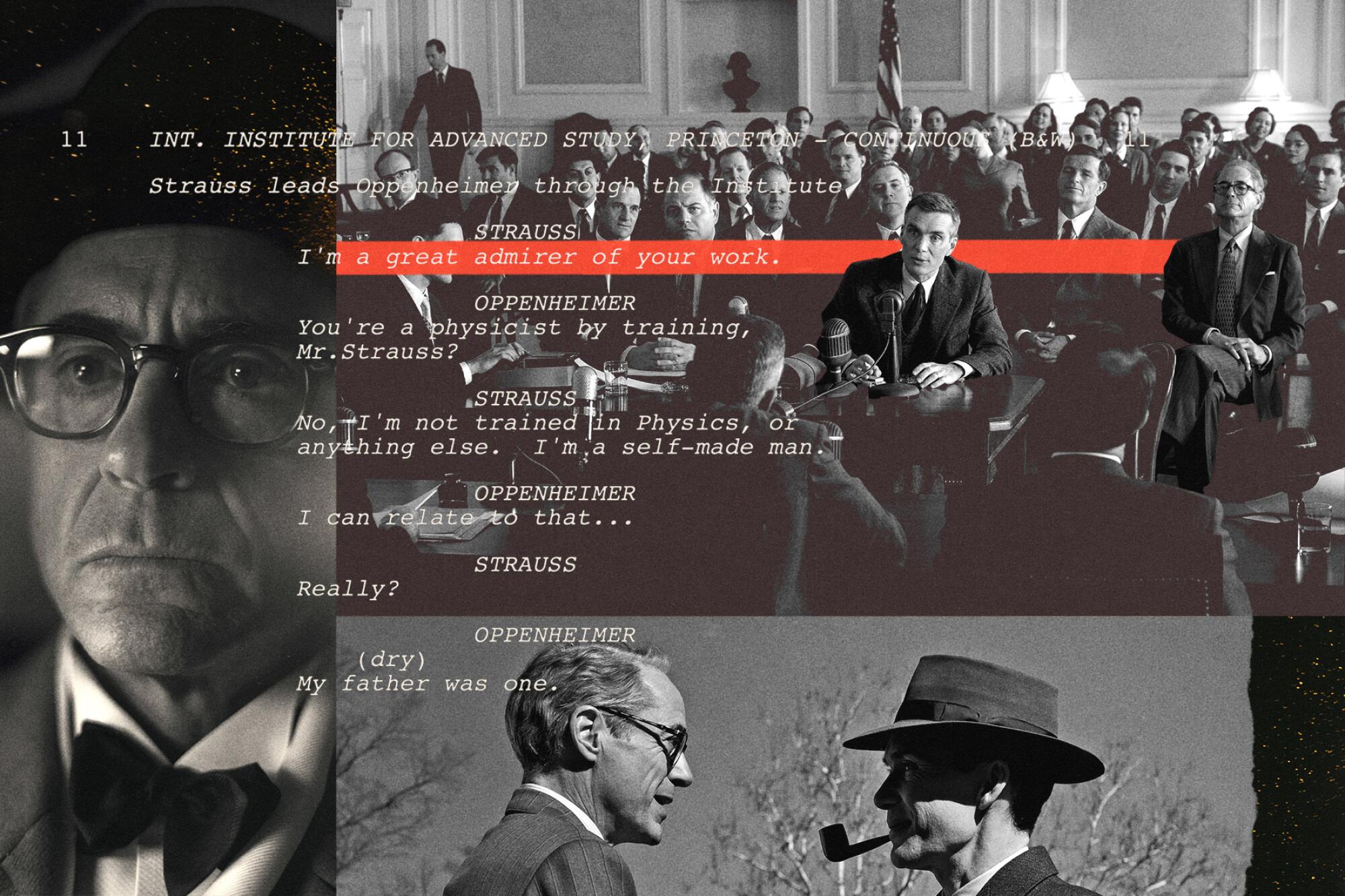
Scene 2: Strauss meets Oppenheimer
“Oppenheimer” is partly a battle of wills between Oppenheimer (Cillian Murphy) and Lewis Strauss, the vindictive head of the Atomic Energy Commission, played by Robert Downey Jr. The tension between the two men is laid out in their first meeting, with Strauss clearly trying to hide his insecurity around this brilliant mind.
“I had to tap into that universal truth that even those who have achieved great success can be fraught with self-doubt, especially when juxtaposed against a towering intellect like Oppenheimer,” Downey says of playing the scene. “It was about peeling back the layers of a man who has climbed the ranks, who has power and influence yet finds himself grappling with a sense of inadequacy in the face of true genius.”
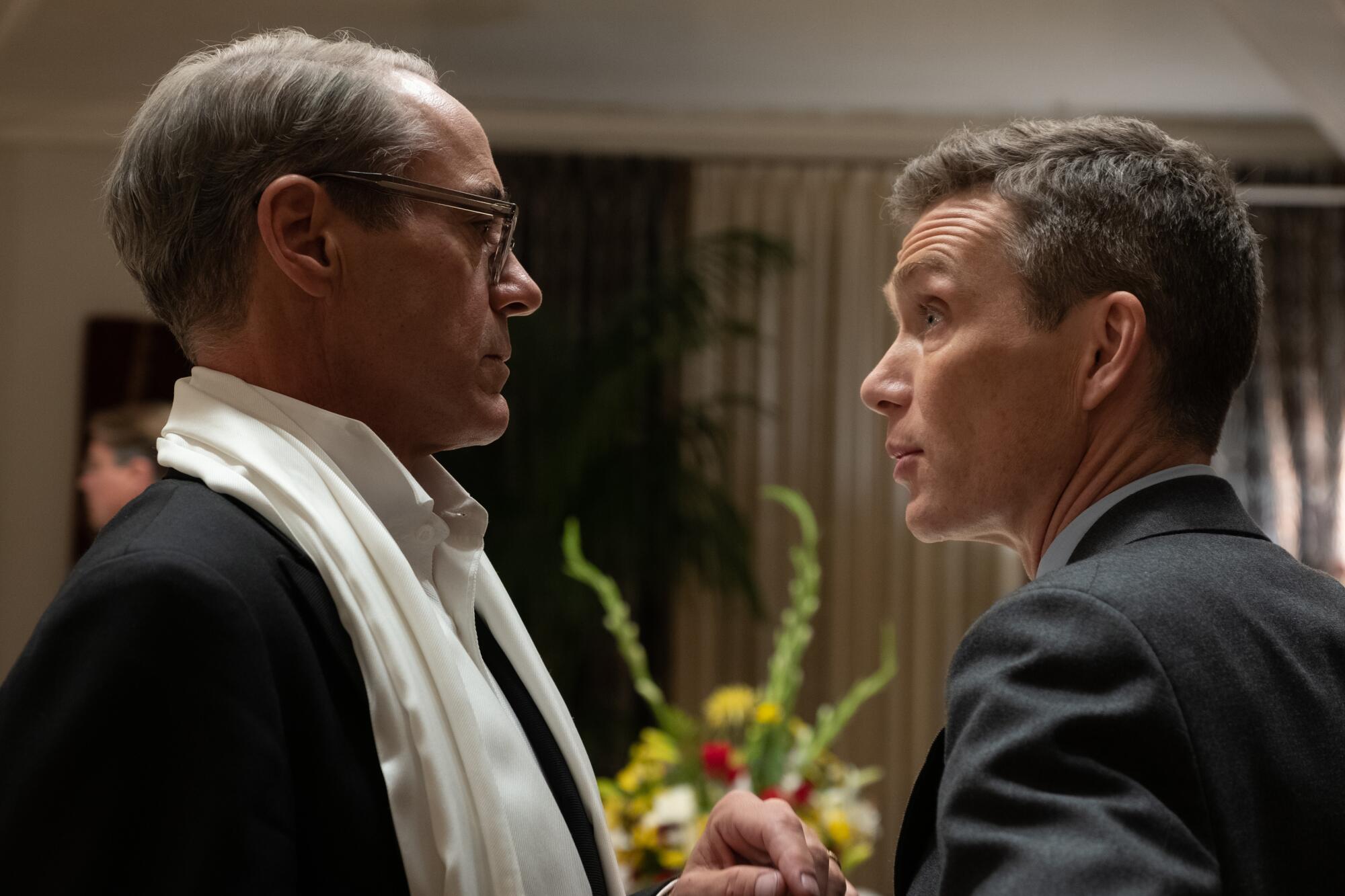
Scene 3: Oppenheimer meets Jean
Florence Pugh’s Jean Tatlock, a psychiatrist and Communist Party member, instantly entrances Oppenheimer at a party. Their crackling flirtation is as intellectual as it is sexual.
“It was a bit of a dance,” Murphy says. “[Oppenheimer] was peacocking a little bit, for sure — they were all living in this highly intellectual world, they would show how smart they were, and he was the smartest of them all. That was my first scene with Florence, actually — she’s got such a presence in person and on film. I don’t remember rehearsing that much — we just went straight into it and found the scene as we went.”
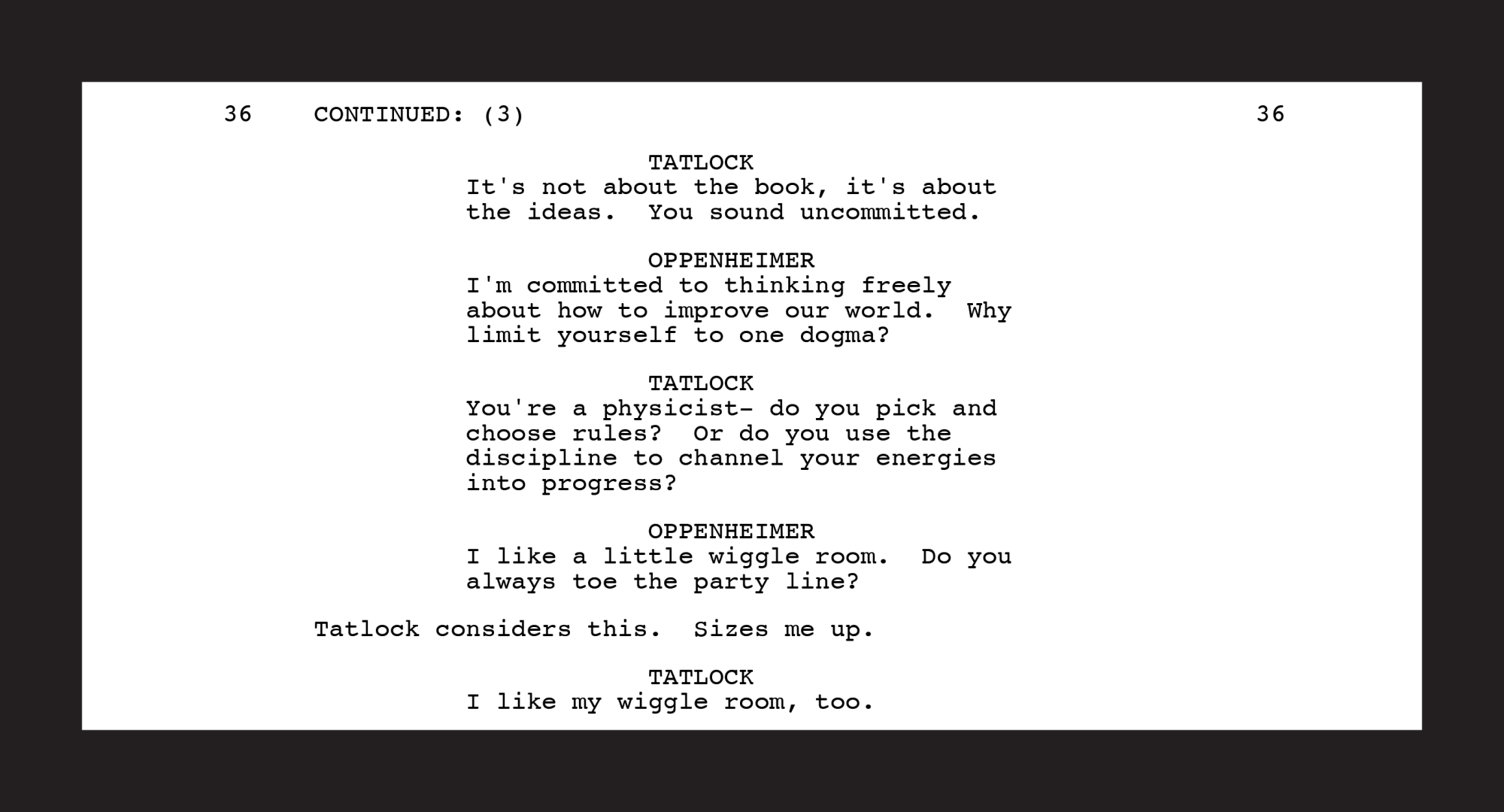
Scene 4: Kitty seduces Oppenheimer
Oppenheimer’s other principal love affair is with Kitty (Emily Blunt), who becomes his wife. (He was her third husband.) Their passion is cemented during a horseback ride in New Mexico.
“When I first read that scene, it appears like a monologue giving you the backstory of her life,” Blunt says. “But the more I read it, the more I was like, ‘No, this whole thing is a seduction.’ It’s, ‘Look how interesting I am. Look at all these things I’ve done. Look how many men I’ve been with.’ It was this complete seduction of representing how wild she was.
“I decided to play her at a real clip,” she says of filming that scene. “She’s like a whirlwind — she should come into [Oppenheimer’s] life and just sweep everything up into the air. The only thing [Nolan] said, because Chris is so understated in the most wonderful way, is [subdued voice] ‘Great, I really liked the pace.’ ” Blunt laughs. “There was a simplicity to how he presents his like of something.”

Scene 5: Groves recruits Oppenheimer
“Their first encounter was one of my favorite scenes,” Murphy says of Oppenheimer’s initial meeting with Matt Damon’s Leslie Groves, an Army Corps of Engineers officer, which leads to some deft verbal gamesmanship. “Sometimes, when you have dialogue that good, it’s about finding a rhythm that works between you and the other actor — and between you and the director, and you and the cameraman. You all know the meaning [of the scene], because you studied the script and researched it for months, so when you find a rhythm and it’s just singing, that’s really special.”
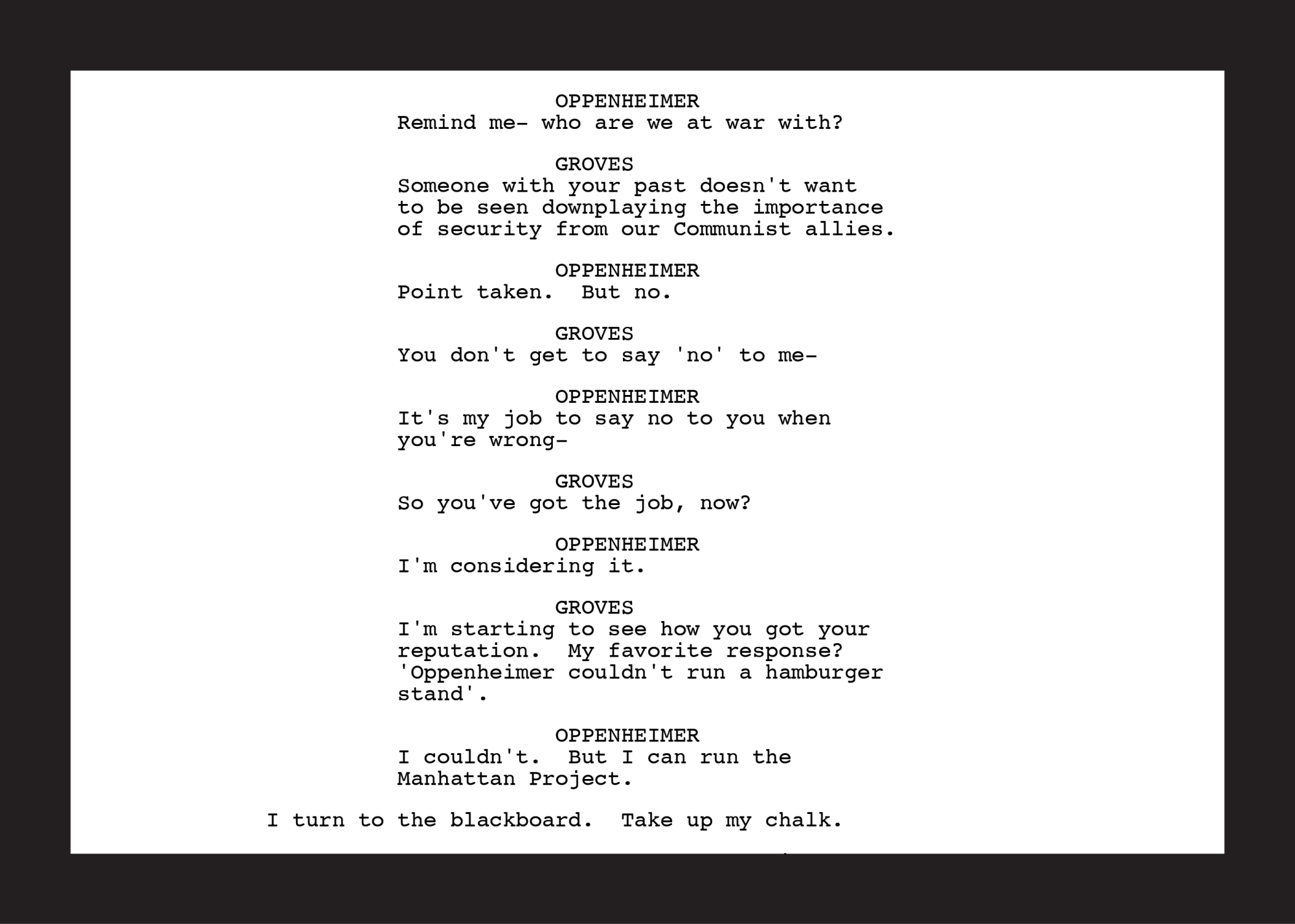
Scene 6: Jean’s death
Oppenheimer is devastated at the news that Jean died by suicide, but Kitty has no sympathy for his self-pitying. The intense scene had to be shot quickly.
“We had very little time — we were losing the light,” Murphy notes. “I was working with Emily, who is one of my favorite actors, and I was working with Chris, and we have this trust, so we managed to get it. Sometimes, time pressure can add to what you’re trying to achieve.” He adds, with a laugh, “Not always, but in that particular occasion, it worked for us. You’re not overthinking it emotionally, you’re just getting to the place that you need to get.”
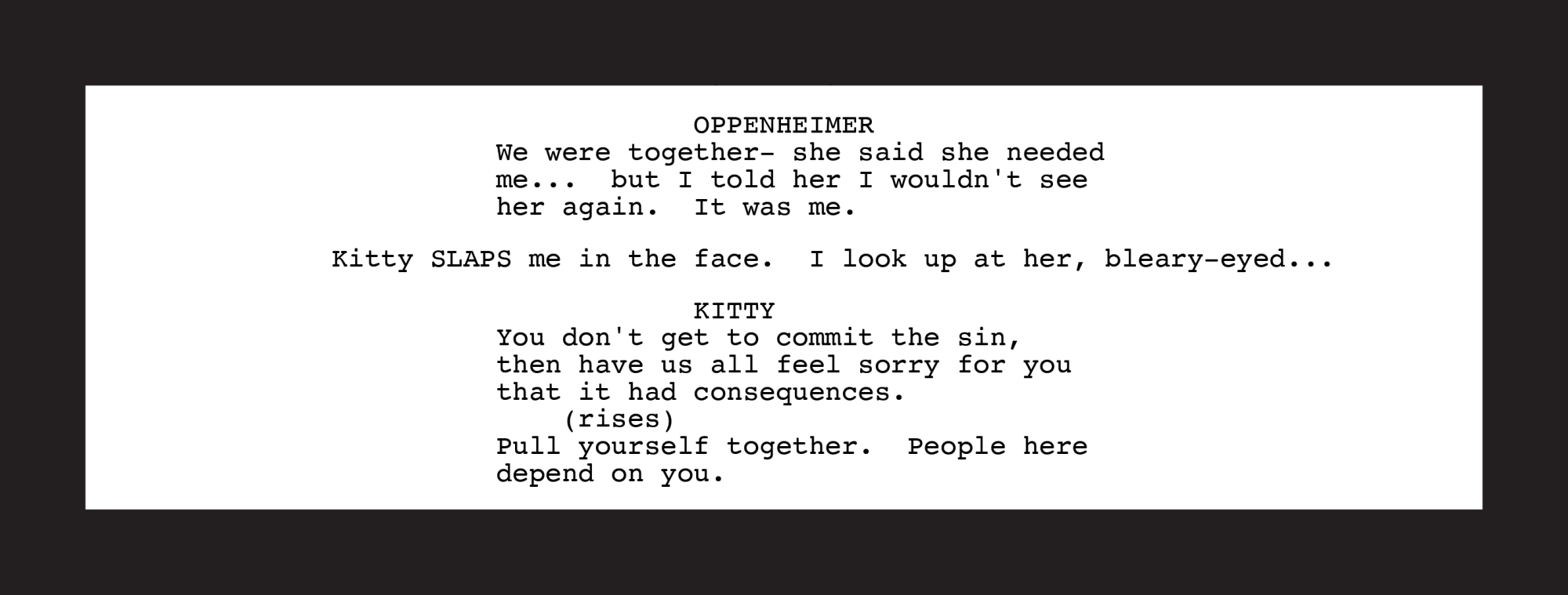
The actor and director Christopher Nolan share a mutual interest in conveying a character’s emotional conflict through close-ups that linger on an actor’s face and allow the audience to feel inner turmoil.
Scene 7: Who do we bomb?
Nolan’s spare, sharp dialogue is presented almost verbatim in the film. But there was one crucial tweak in the scene in which Secretary of War Henry L. Stimson, while discussing which Japanese cities should be targeted, mentions that the U.S. should not bomb Kyoto because he and his wife honeymooned there.
“The incredible thing about working with a great ensemble on a true-life story is these guys would come to set knowing more about their characters than I did,” Nolan says. “They’d read books, they’d done all the research, so they were able to improvise. [That’s] one of my favorite lines of the film, and it comes from James Remar, a wonderful actor who turned up on the day. I had written [my] line based on the research that I had done, based on ‘American Prometheus,’ that [Stimson] had taken Kyoto off the list of possible targets because of its cultural significance [to the] Japanese people. But James pointed out, ‘Actually, he and his wife honeymooned there.’ Eventually I realized, ‘You should just say that.’”
Diving into an explosive episode of 20th century history that launched the nuclear age, director Christopher Nolan unleashes the most ambitious film of his career.
Remar delivered the line that way, and it made the final cut. “As a director on set every day, I’m happy to change things,” Nolan says. “I’m happy to listen to people’s input, then consider, ‘Can we make something better? Is there something I’ve missed?’ That was a familiar process on this project, and [that line] is a wonderful example of it.”
Scene 8: Trinity
The film’s showstopping moment is the Trinity test at Los Alamos. Cinematographer Hoyte van Hoytema, who has worked with Nolan since 2014’s “Interstellar,” wasn’t initially sure how best to depict the bomb’s fearsome, beautiful impact.
“I try not to pretend that I really know exactly how things are supposed to be done,” he says. “I’m more like, ‘I want to play around and see what works.’ Because we cannot re-create a nuclear explosion, [we thought,] ‘How can we recreate this explosion on a much smaller scale and then film it so that it actually looks like it’s something that is huge and magnificent?’ So we experimented — [it’s] a whole mixture of scopes and sizes and ways of filming that then are put together that give us the illusion. It’s one singular, big explosion, but it’s many elements that come together.”
Nolan’s team stresses they weren’t out to make a documentary, but they did ample research, including compiling eyewitness accounts of the actual Trinity test. “They’re very telling,” says Van Hoytema. “They are filled with a lot of detail, [which] gives it personality. Like the way that colors are described — how white light changes into these colors and then slowly fades out to a fire that goes off. I used [that] as a lighting-design cue — as we progress through the sequence, I’m changing the lighting color. We see [the explosion] projected on the faces of our bystanders, our scientists — the eyewitness accounts feed you all the eccentricities of actually witnessing something like that.”
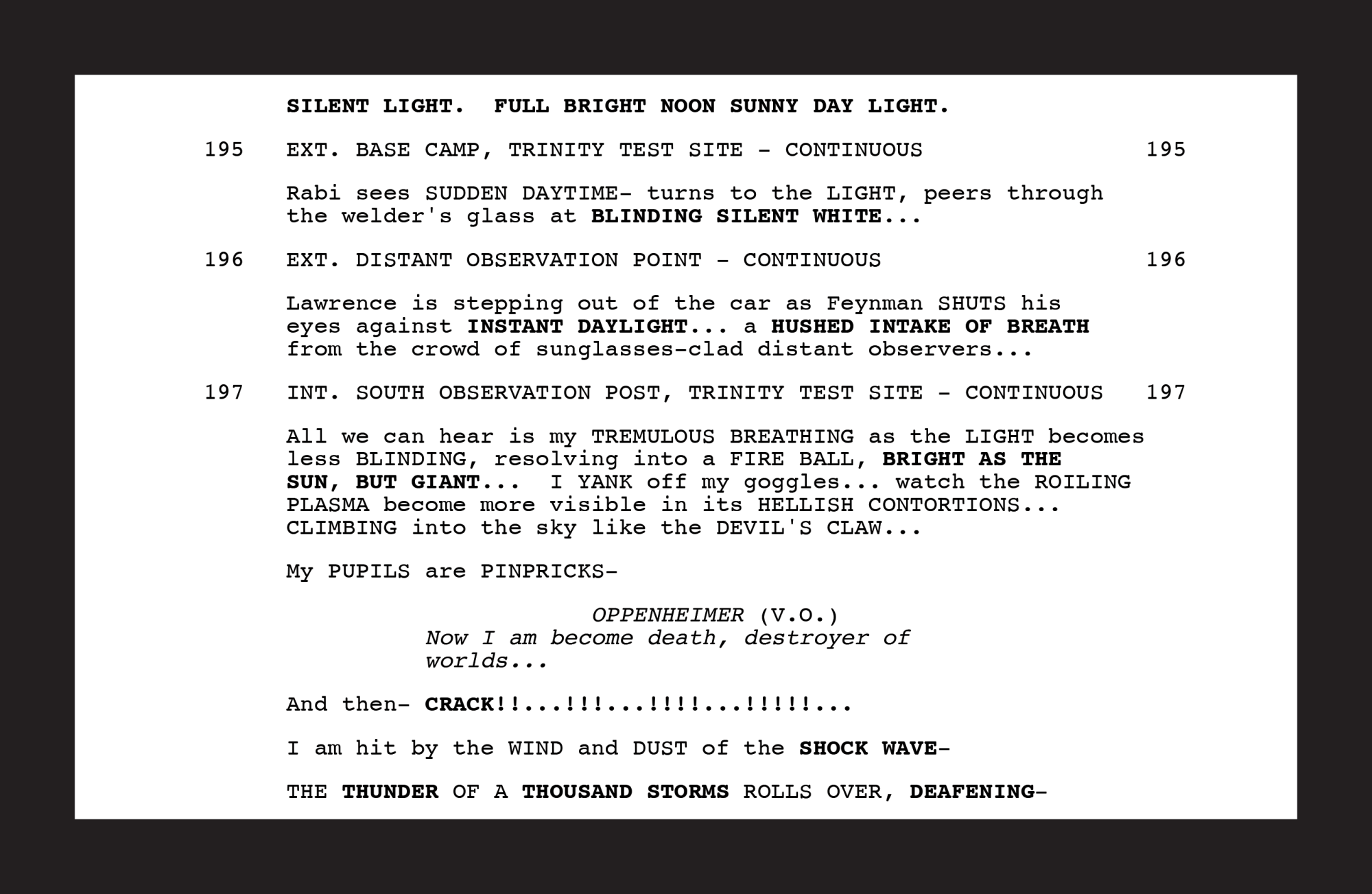
Scene 9: The aftermath of the bombing
Oppenheimer and his Los Alamos associates react in stunned silence at footage of the Japanese victims of the bombings, the horror of their achievement made plain. “The audience doesn’t see the images that the scientists are watching, but we actually did — those awful, horrific images from Hiroshima,” Murphy recalls. “So you get the reaction for real — I was reacting to those [images] as real as I possibly could.”
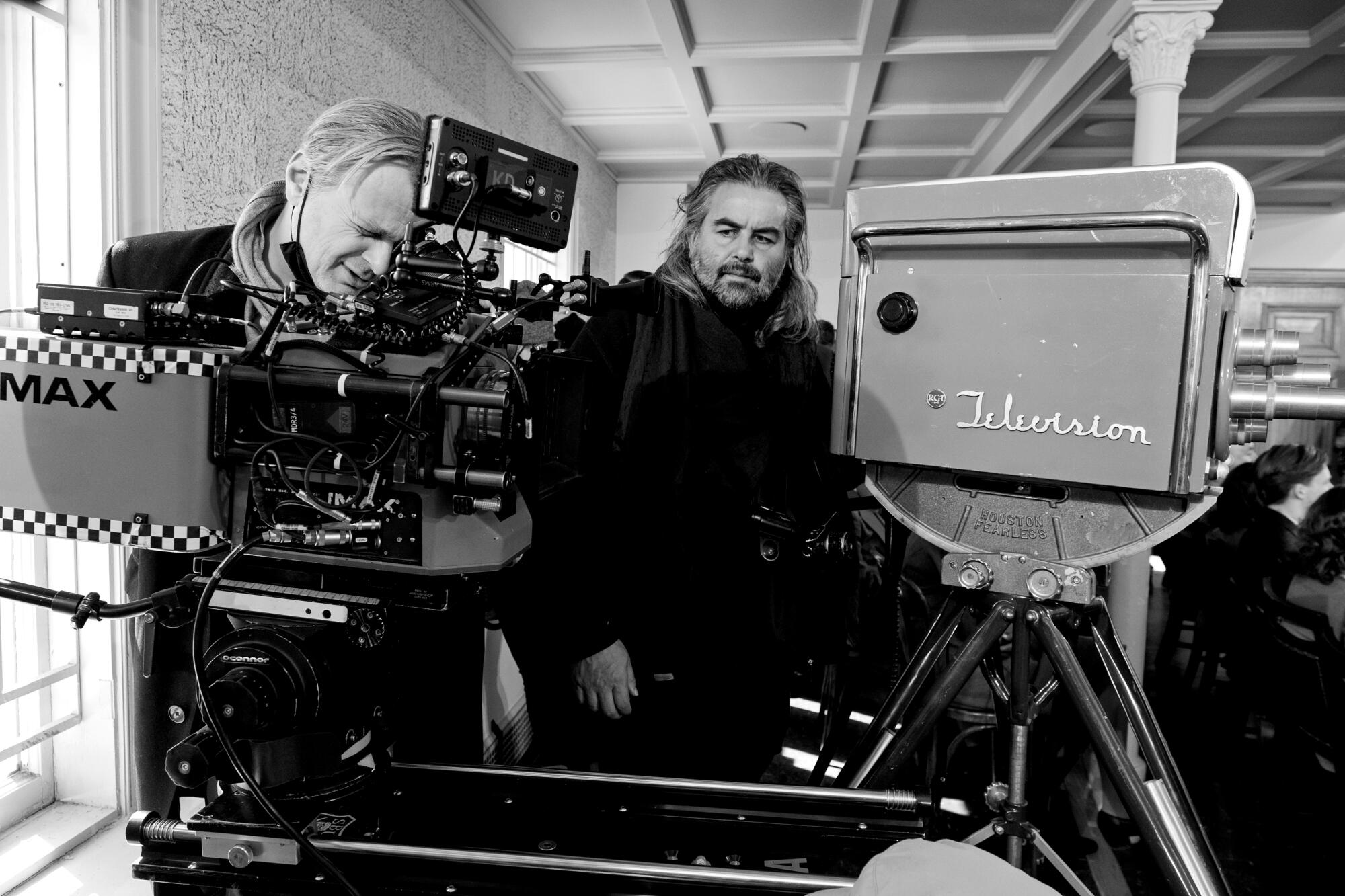
Scene 10: Roger Robb tries to intimidate Kitty
Jason Clarke plays Roger Robb, the prosecutor seeking to revoke Oppenheimer’s security clearance. In the script, when Robb interrogates Kitty, he tries to get into her eye line. Clarke had an idea how to raise the stakes.
As Blunt recalls, “Jason said, ‘I feel like I want to get close to her — I want to try a different tactic here.’ And Chris went, ‘Great, try it.’ ” And so Clarke moved his chair aggressively close to Blunt, his character hoping to intimidate her.
“The scene [became] a sparring match between them — it became much more intimate and much more tense,” Blunt says. “Jason’s a big guy — it definitely created a reaction in me; it gave me more to play with. It’s those beautiful moments on set that you live for — it’s so alive and so exciting.”
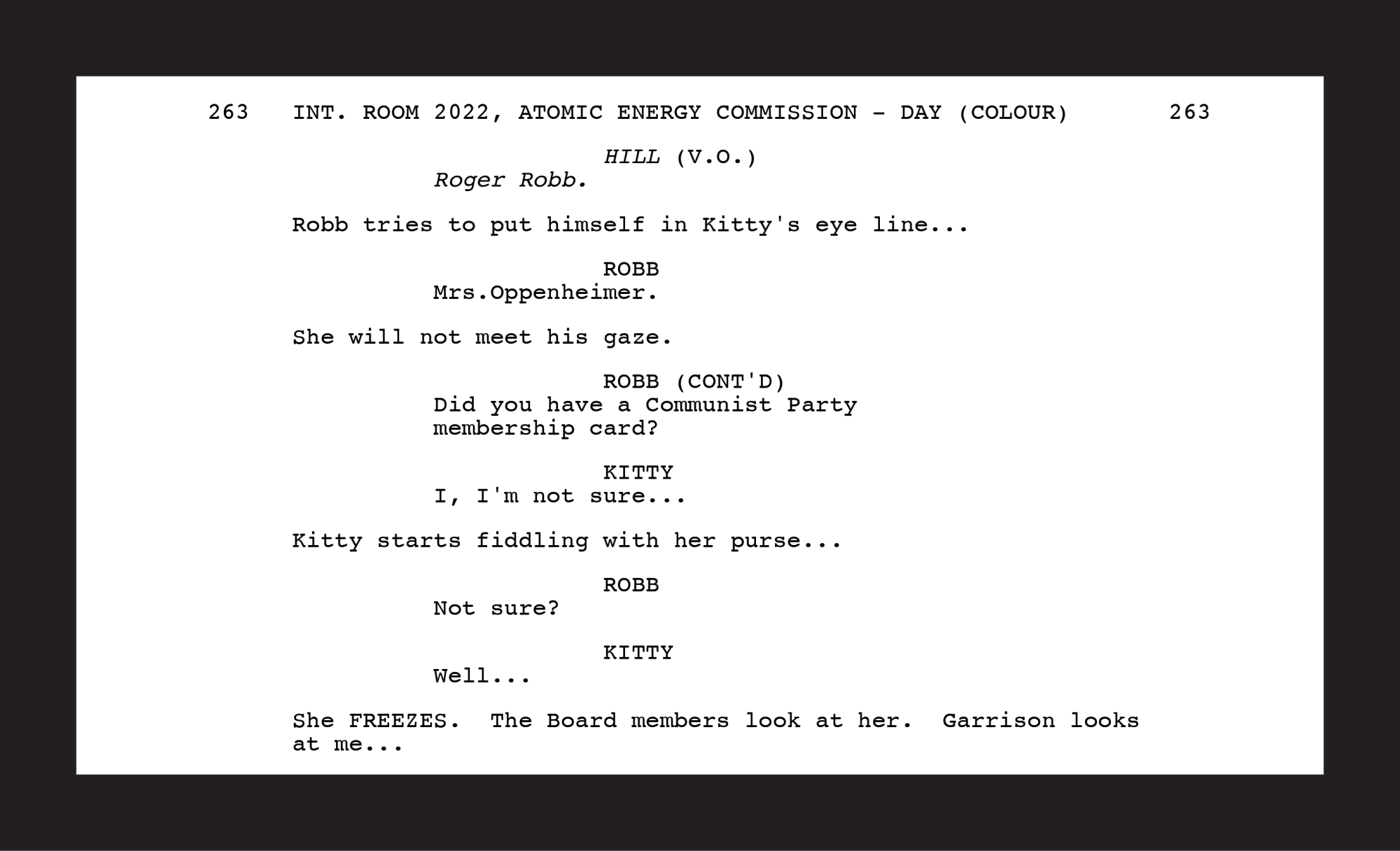
Scene 11: Strauss’ humiliation
Hoping to be appointed Commerce secretary, Strauss goes down in defeat, his public humiliation quick and total.
“In portraying Strauss, I had to delve into a deeper understanding of the character’s emotional landscape,” Downey says. “The scene where he is confronted by his advisers after a disastrous showing before the committee is a transformative moment for him. It’s not just about the loss of his political career, but the complete upheaval of his identity and future. To get there and really bring that rawness, I had to dismantle my own ego bit by bit and lay it all out there.”
Author Bird marveled at how much Nolan expanded the book’s chronicling of Strauss’ hearings. “We [just] have a few paragraphs establishing the fact that Strauss went through this confirmation hearing to be Commerce secretary. We didn’t go into the confirmation hearing at all, but Nolan pays quite a lot of attention to it. I asked him about this, and he says, ‘Well, I got curious in reading the book about what happened to Strauss, and so I assigned a researcher to get me the transcript of the confirmation hearing.’ That was something that [Sherwin] and I didn’t bother to do.”

Scene 12: Dreaming of the perfect ending
“I couldn’t really feel comfortable with this script until I knew the ending,” Nolan says. “Somewhere relatively soon after I started writing my first draft, I woke up in the middle of the night with the ending in my head.” Quickly getting out of bed and running into his office, “I wrote it out by hand. I read it again the next morning and, luckily, I could read my handwriting and it all made sense. That’s pretty much exactly how it wound up in the film. Once I had that, I felt much more confident just plowing into the material — I knew exactly where it was going.”
Murphy’s haunted look at the film’s finale has become iconic, but he’s reticent to describe how he arrived at that moment. “It’s almost like, if you shine a light on it, it disappears,” the actor says of his process. “[Actors] don’t quite know how it happens — you really trust your director, and he or she knows when it’s right. In that particular scene, we all knew it was the end of the movie — the last shot of the movie — but you can’t think about that stuff too much. You just have to go to the emotion.”
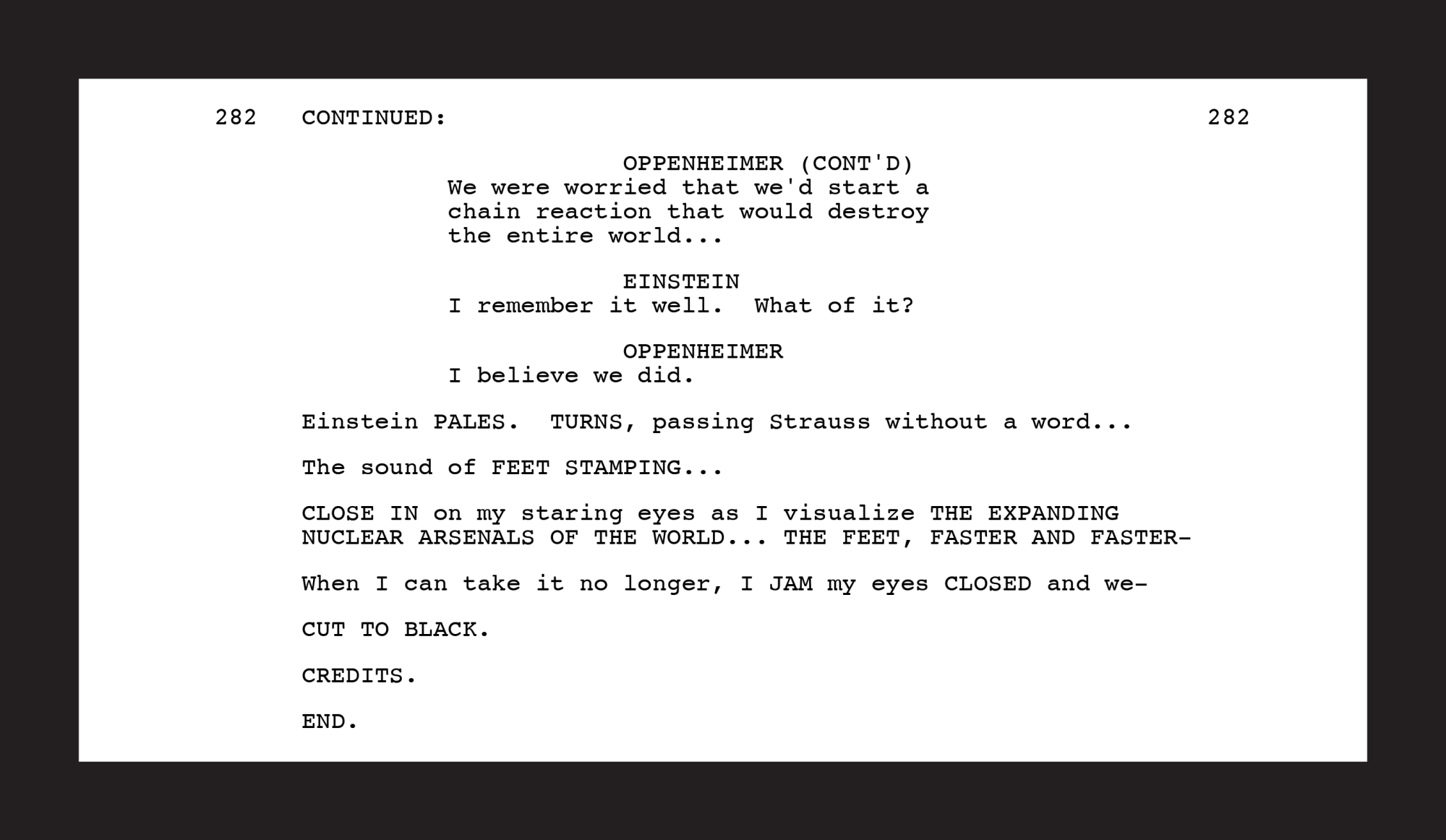
More to Read
From the Oscars to the Emmys.
Get the Envelope newsletter for exclusive awards season coverage, behind-the-scenes stories from the Envelope podcast and columnist Glenn Whipp’s must-read analysis.
You may occasionally receive promotional content from the Los Angeles Times.

